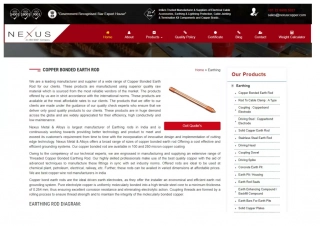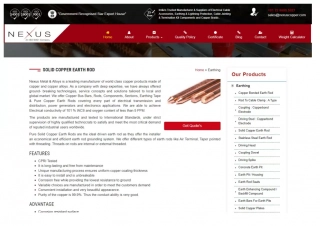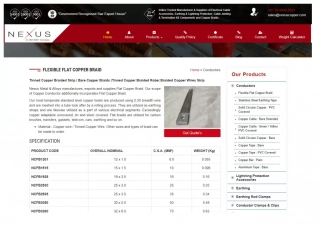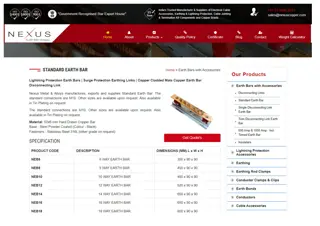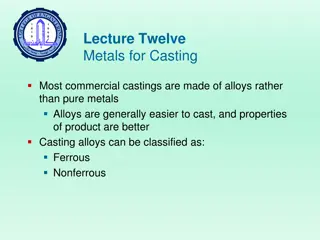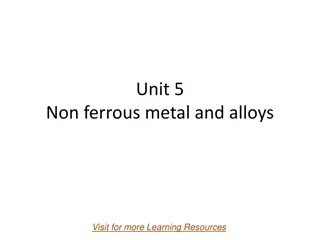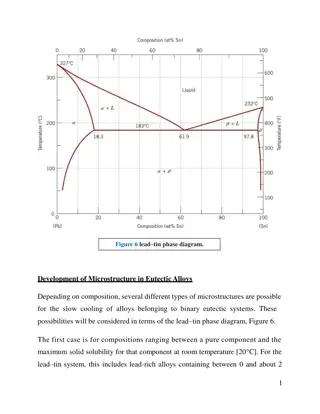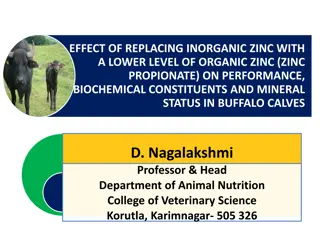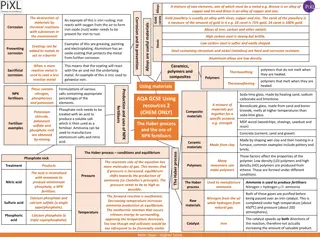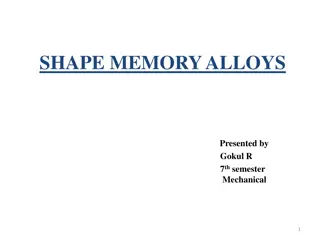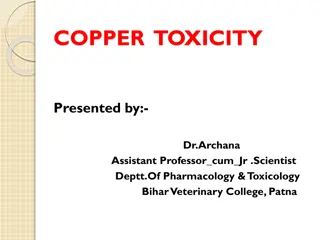Brass Door Knobs: All About Brass, Copper, and Zinc Alloys
Brass door knobs are typically made of brass, an alloy of copper and zinc. This presentation delves into the properties and uses of brass, copper, and zinc alloys. Learn about the origins of brass production in India and Canada, the conductivity of brass, the significance of copper in red blood cells, and the essential role of zinc in the body. Explore the unique characteristics and applications of these metals, including their mining sources and manufacturing processes. Discover more about these versatile materials and their impactful presence in everyday items.
Download Presentation

Please find below an Image/Link to download the presentation.
The content on the website is provided AS IS for your information and personal use only. It may not be sold, licensed, or shared on other websites without obtaining consent from the author.If you encounter any issues during the download, it is possible that the publisher has removed the file from their server.
You are allowed to download the files provided on this website for personal or commercial use, subject to the condition that they are used lawfully. All files are the property of their respective owners.
The content on the website is provided AS IS for your information and personal use only. It may not be sold, licensed, or shared on other websites without obtaining consent from the author.
E N D
Presentation Transcript
Brass Door Knob By: Levi G.
Brass Door knobs are usually made of brass. Brass is an alloy of copper and zinc. Alloys are multiple metals combined, or metals with other elements. Brass is made when copper and zinc are heated, until the zinc reacts with the copper to create brass. India produces the most brass in the world. In canada, brass is made in Toronto, Ontario. Brass does not rust, and it s melting point is 930 . Brass is conductive, which means electricity can pass through it.
Copper Remember how Brass is an alloy of copper and zinc? Well now you get to learn about those! Yay Anyways, copper is diamagnetic, which means magnets retract it. Copper is found in most coins, and it s melting point is 1085 so you d need a very hot fire to melt your penny s in, but pennies aren t pure copper but that s for a different time. Copper is mined, not manufactured. With iron, copper makes red blood cells in your body,and helps maintain the tissues in blood vessels. Ontario and BC produce the most copper in canada. Copper is well known for it s high conductivity and it s use in wires.
Zinc It s zinc s turn! Zinc is also known as calamine ore. Zinc s boiling point is 419.5 , and boils at 907 . It has many uses in the body. It is in cells all over the body, helps fight bacteria and virus s, and the body needs it to make protiens and DNA. Manitoba mines the most zinc in Canada. Zinc is also mined, not manufactured. You remember that zinc is used as an alloy in brass, but it is also used as an alloy in alluminum and others.
All websites used Wikipedia www.madehow.com www.worldcoppersmith.com www.investingnews.com
Thank You For Watching This Presentation I Hope You Liked It


